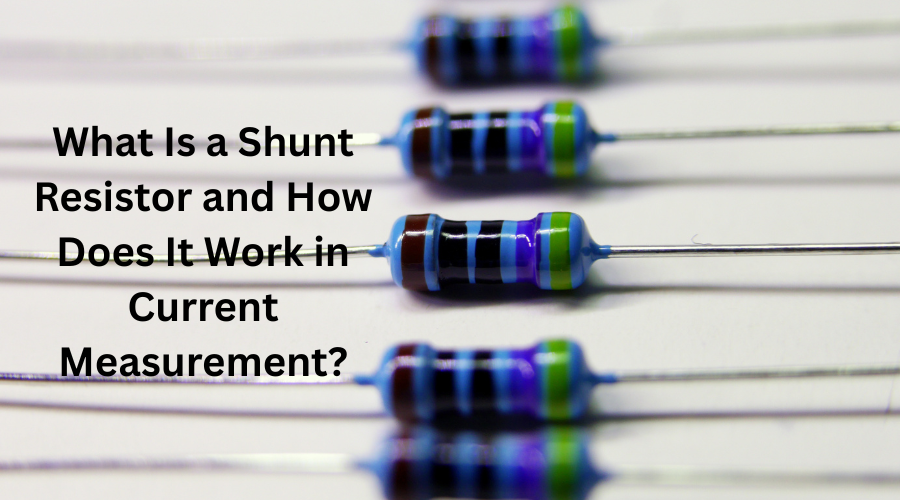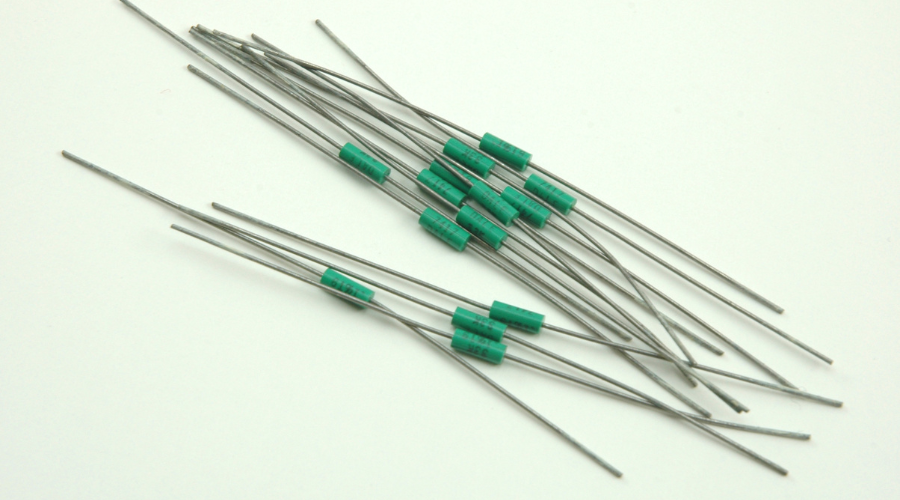What Is a Shunt Resistor and How Does It Work in Current Measurement?
- laifutechco
- Jul 24
- 4 min read

In the world of electrical engineering, precise current detection is essential for designing safe, efficient, and reliable systems. Whether you're working with battery management systems, electric vehicles, power supplies, or industrial machinery, knowing exactly how much current is flowing through a circuit can make all the difference. That's where shunt resistors come in. If you've been researching this topic, chances are you're also looking for a trusted shunt resistor supplier to ensure you're using quality components.
This blog dives deep into what a shunt resistor is, how it works in current measurement, and why it's such a vital part of modern electronic systems. If you want to understand the concept from the ground up or just brush up on your technical knowledge, you're in the right place.
What Is a Shunt Resistor?
A shunt resistor is a precision resistor that's used to measure current by creating a voltage drop proportional to the amount of current flowing through it. These resistors are typically low in resistance (often in the milliohm range), which means they don't significantly affect the circuit they're measuring, yet they provide enough voltage drop to be measurable by a voltmeter or an analog-to-digital converter (ADC).
Why Is It Called a "Shunt" Resistor?
The term "shunt" literally means to divert. In electrical systems, a shunt resistor is used to divert current around a measuring device. The electricity passes through the shunt resistor, and the voltage drop across it is used to calculate the current, following Ohm's Law:
V = I × R, where:
V is voltage,
I is current, and
R is resistance.

How Does a Shunt Resistor Work in Current Measurement?
Step-by-Step Breakdown:
Integration into Circuit
The shunt resistor is wired in line with the load so that the current flows directly through it.
Voltage Drop Measurement
As current passes through the shunt, a small voltage drop is created. This drop is directly proportional to the current.
Signal Processing
The voltage drop is then read by a sensing device, such as an op-amp circuit, microcontroller, or digital multimeter.
Current Calculation
The system calculates the current using the measured voltage and the known resistance of the shunt resistor.
Applications of Shunt Resistors
Shunt resistors are used in a variety of low to high-current applications, including:
Battery Management Systems (BMS) in electric vehicles
Solar inverters for energy metering
Power supply units for overcurrent protection
Electric motors for current feedback
Consumer electronics like smartphones and laptops
Types of Shunt Resistors
Not all shunt resistors are created equal. Depending on the application, current range, and
required precision, different types are used:
1. Four-Terminal (Kelvin) Shunt Resistors
These feature two terminals for current and two for voltage, eliminating lead resistance errors and increasing measurement accuracy.
2. Surface-Mount Shunt Resistors
Ideal for compact PCB designs. They offer low resistance, good heat dissipation, and automated placement.
3. Wire-Wound Shunt Resistors
These are more robust and better suited for high-current, high-power applications due to their heat-handling capacity.
Key Characteristics to Consider
When choosing a shunt resistor, several factors influence performance and accuracy:
1. Resistance Value
Lower resistance = lower voltage drop = less energy wasted. But it must be high enough to give a readable voltage.
2. Tolerance
High precision applications need resistors with tight tolerances (e.g., ±0.1% or better).
3. Power Rating
Shunt resistors must handle the power (P = I²R) generated without overheating or degrading.
4. Temperature Coefficient
A low temperature coefficient ensures that resistance remains stable across different temperatures, maintaining measurement accuracy.
5. Material Composition
Resistors made with manganin or nichrome have stable resistance properties and are often used in precision applications.
Benefits of Using a Shunt Resistor for Current Sensing
High accuracy when combined with precision measurement systems
Cost-effective compared to Hall-effect sensors or current transformers
Compact size ideal for modern electronics
Wide current range support, from microamps to hundreds of amps
Fast response time, essential in dynamic load environments
Common Challenges and How to Overcome Them
Heat Dissipation
Shunt resistors can get hot during operation. Use heat sinks or materials with better thermal conductivity.
Voltage Offset
Minimize offset errors using precision op-amps with low input bias current.
Electromagnetic Interference (EMI)
Use proper shielding or differential sensing techniques to mitigate EMI and maintain signal integrity.
Real-World Example: EV Battery Monitoring
In electric vehicles, shunt resistors monitor the current entering and exiting the battery pack. Accurate current sensing helps determine state-of-charge (SOC) and state-of-health (SOH)—critical for performance and safety.
With tight spaces and high reliability requirements, engineers opt for compact, high-precision surface-mount shunt resistors that integrate easily into battery management systems.
Where to Source High-Quality Shunt Resistors?
There are numerous electronic component manufacturers globally, but choosing a reliable supplier is crucial. Look for suppliers with:
An established history of success in the electronics industry
Strong technical support and datasheets
Components that meet international standards
Customization options for specific applications
Conclusion
To sum it up, shunt resistors play an irreplaceable role in modern electrical and electronic systems. They provide a simple yet effective method for accurately measuring current, making them invaluable for engineers across industries. Whether you're designing a new energy storage system, a power supply, or an industrial control panel, integrating the right shunt resistor ensures precise monitoring, efficiency, and safety.
If you're looking to enhance the reliability of your next design, understanding how shunt resistors function is the first step—and choosing the right supplier is the next.
FAQs
Q1: What is the typical resistance value of a shunt resistor?
Shunt resistors typically range from 1 milliohm to a few ohms, depending on the application.
Q2: Can shunt resistors measure both AC and DC current?
Yes, but they are more commonly used for DC current. For AC, additional circuitry is required to process the signal.
Q3: Are shunt resistors accurate?
Yes, when designed and used correctly, shunt resistors offer high accuracy and repeatability, especially in precision systems.
Q4: Where are shunt resistors placed in a circuit?
They are placed in series with the load, ensuring all current flows through the resistor for accurate measurement.
Q5: How do I know which shunt resistor to use?
Consider your application's current range, required accuracy, space limitations, and power rating when selecting a resistor.




Comments